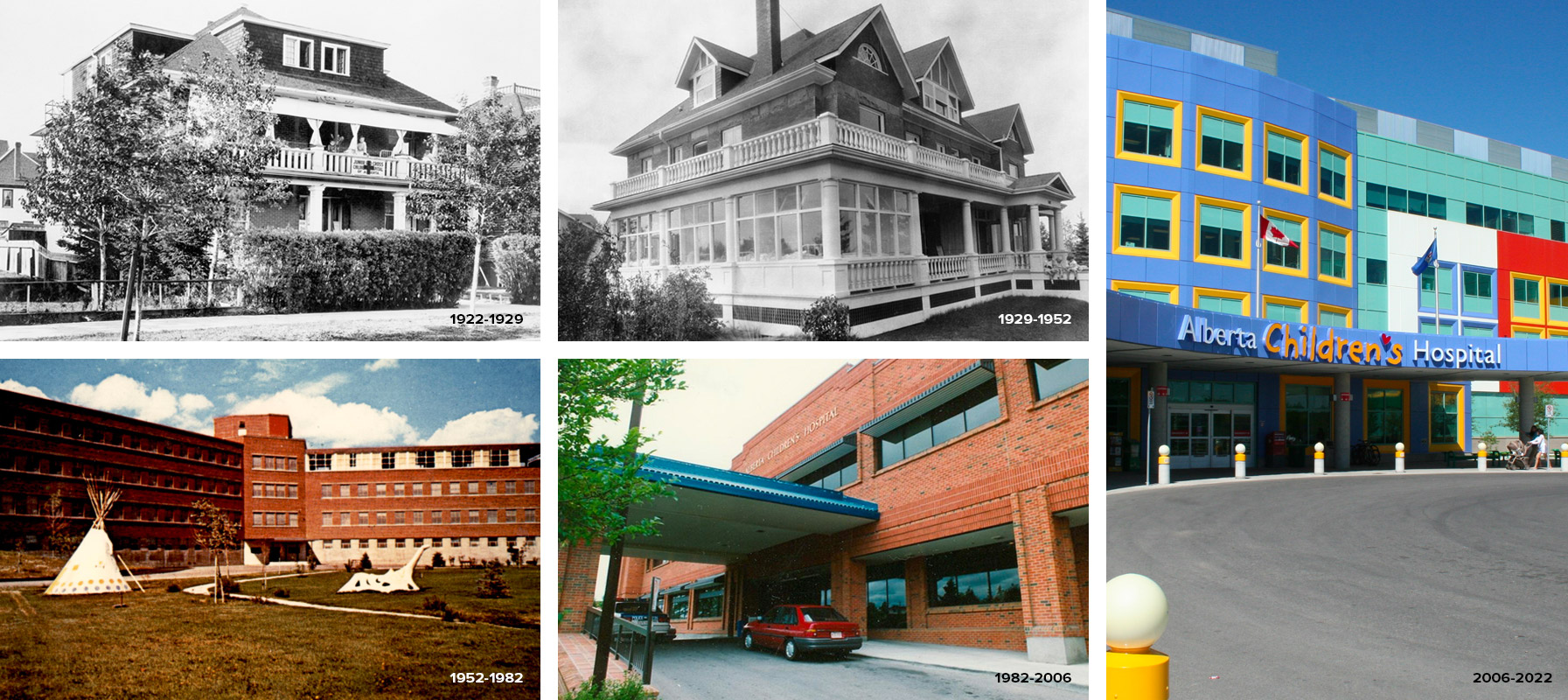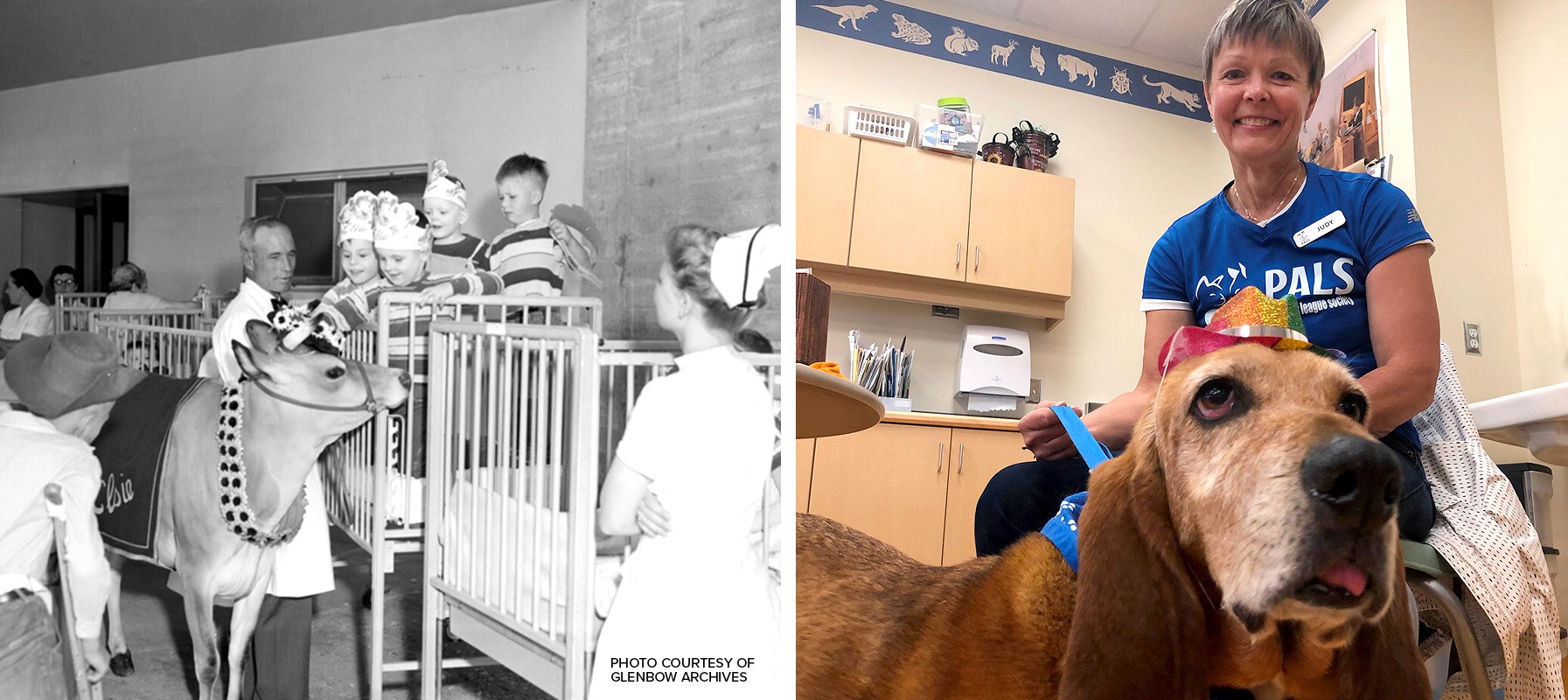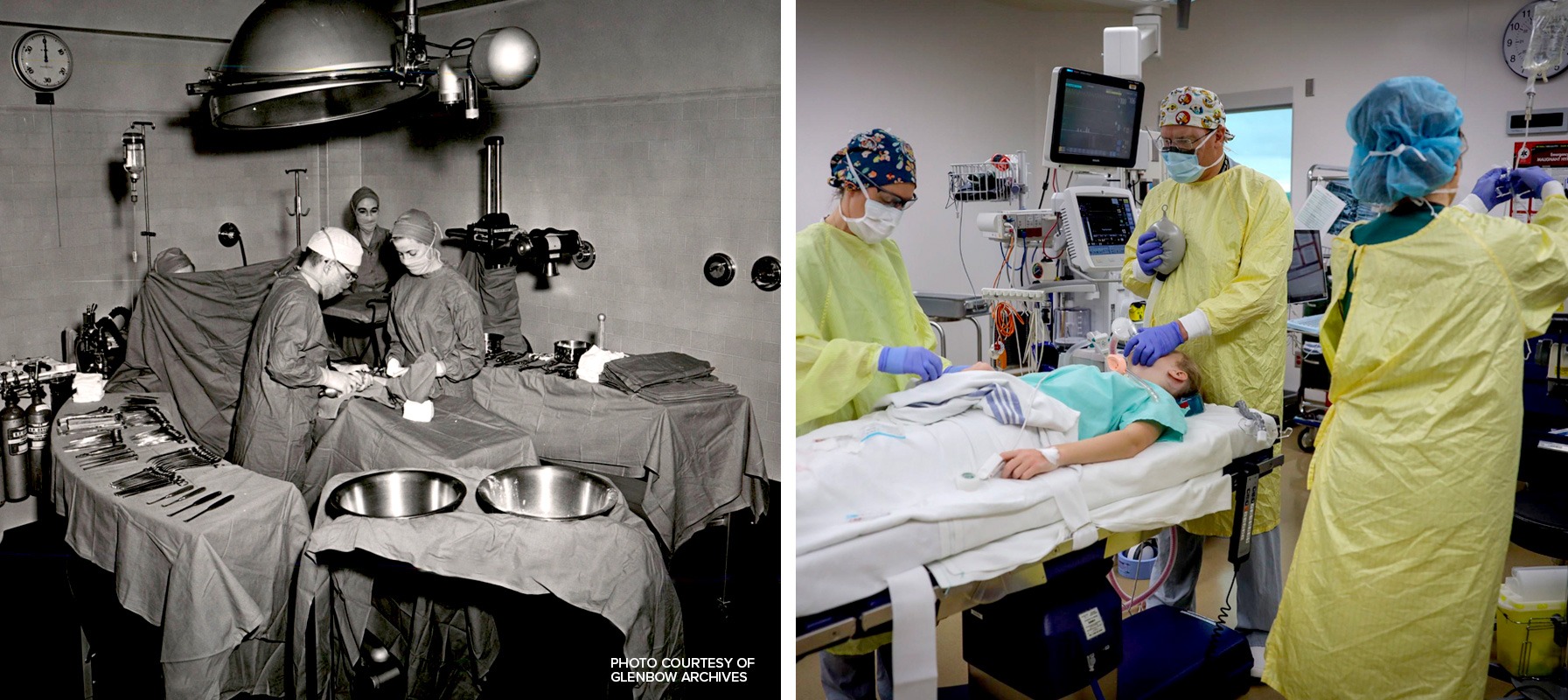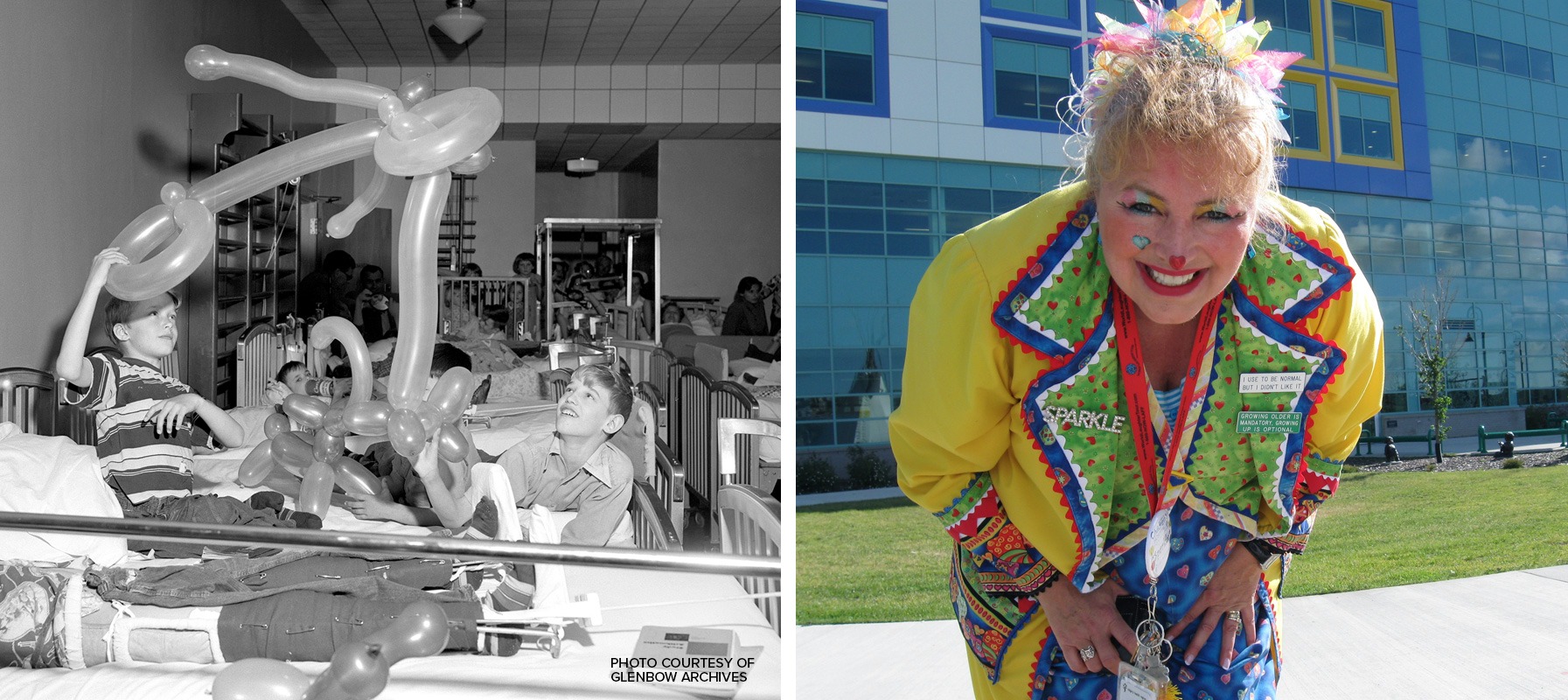Then + Now
From the start, our hospital set out to provide the very best care possible for children. Throughout the years and still to this day, our community has generously supported that goal, making possible tremendous advancements in child health care and research.

THEN: Our first hospital opened as the Junior Red Cross Children’s Hospital in 1922. Primarily an orthopedic hospital to help children with polio, it had 35 beds and was staffed by volunteer physicians. On average, children would stay in hospital for two months or more with strict, once a week, visiting hours for parents only. It was not uncommon for children with polio to be in hospital for years.
NOW: Built with support from the community and recognized as a world-class pediatric healthcare facility, more than 100,000 children and their families rely on the Alberta Children’s Hospital every year. Multi-disciplinary care for children is provided through inpatient units and 90 specialized clinics ranging from Asthma to Vision. Private rooms with bright windows and a sleeping space for parents makes overnight hospital stays more comfortable for everyone.

THEN: Visits with four-legged friends has always been a valuable and memorable experience for kids as they recover, though the visitors used to be a little more…“exotic”.
NOW: Children are able to spend time with animals during regular visits to the hospital. Evidence suggests pet therapy can help achieve specific physical, social, cognitive and emotional goals for patients. Beyond being a source of comfort for kids who might be missing their own pets at home, spending time with animals in hospital can help reduce stress and anxiety, stimulate senses, provide distraction from medical treatment and support the rehabilitation or development of fine motor skills.

THEN: Surgery for children was often done by surgeons who primarily cared for adults. Operations were typically for kids with orthopedic needs including scoliosis, club foot and birth defects.
NOW: Technology has advanced incredibly. State-of-the-art tools and cameras allow surgery teams to carry out things that people 100 years ago would have never thought possible such as interoperative imaging and precision brain surgery. There is also a much better understanding of how to care for children specifically. Surgeries are safer and most kids don’t need to be in hospital for weeks to recover – patients can go home the same day after routine operations like appendectomies or tonsillectomies.

THEN: There has always been a focus on allowing kids in hospital to still be kids, despite the health challenges they face. Balloon animals were among the things meant to cheer them up.
NOW: Recognizing that serious illness, injury and hospitalization can cause traumatic stress, community support makes possible a number of very special programs that help children cope with their experiences and express themselves in ways words cannot convey. Art therapy, music therapy and horticultural therapy enable children to enjoy interactive and hands-on activities that build self-esteem and creativity. A therapeutic clown named Sparkle is also a family favourite for distraction and emotional healing.
Photos provided courtesy of Alberta Health Services Archives & Historic Collections and the Glenbow Archives.
Sign up for our newsletter